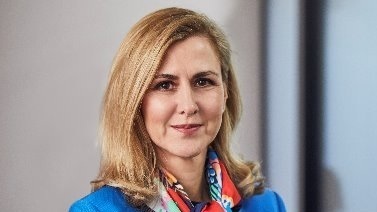
Exclusive: vice chair Sue Lloyd on why the brand new ISSB adds value
After a year in the role, International Sustainability Standards Board vice chair Sue Lloyd sits down with Net Zero Investor
Just over a year ago the relatively young International Sustainability Standards Board (ISSB) appointed a new vice chair, Sue Lloyd.
The former vice chair of the International Accounting Standards Board (IASB) spoke on Tuesday at the annual ICGN conference, which took place in Stockholm this week, where asset owners, managers, regulators, investors and other key industry players gathered to discuss sustainability standards and reporting.
Today Lloyd found time to sit down for an exclusive interview with Net Zero Investor.
Much focus at ICGN this week was on sustainability reporting standards, with many asset owners calling them 'inconsistent' and 'insufficient'. What do you think?
Prior to the formation of the ISSB the IFRS Foundation became very much aware of the increasing demand from investors to really understand how sustainability factors are affecting companies and to inform investment decisions. There were many organisations that were providing frameworks and ideas for how that reporting should occur and information was being provided. But it was inconsistent and lacked comparability. And so that's why a decision was made to establish the ISSB, to provide high-quality information that would be globally comparable and meet investors’ information needs.
So a key role for the ISSB?
We’ve done well working towards publishing our first two Standards which are due to be published by the end of Q2. Now we move on to the next phase of our work which includes working with jurisdictions, companies, investors and others to promote the use of our Standards. And also playing our part in supporting capacity building to prepare the market globally for this new type of reporting. There is much to do on these two fronts.
Let’s look back for a second, what progress has been made in recent years?
Well firstly the ISSB has been formed. That was announced at COP 26 in November 2021 – since then we have put in place a board of 14 people with global representation and a mix of skills, and set up a new multilocation model for the ISSB.
The pandemic highlighted a number of issues for investors and companies on managing risk

We took a number of important decisions as a board on how we would refine our standards. In February, the Board took final decisions on the technical content of the Standards so we are on track to publish final standards around the end of Q2.
Speaking of events in recent years, how did the pandemic impact sustainability standards and reporting requirements?
I would say that the pandemic highlighted a number of issues for investors and companies on managing risk, and demonstrated how essential a broader picture of a company’s exposure to sustainability risks can make a real difference to the quality of investor decision-making. It has focused the minds of investors, companies, but also regulators and policymakers. At our recent symposium in Montreal, we had over 1000 attendees in person, representing 45 different countries, which really demonstrates the growing awareness of the need for our standards.
Looking ahead, what is your next step?
The ISSB was formed to set standards that result in the provision of information to meet investors’ information needs. So your next step should be to help to make sure you get that information. You can influence that by encouraging regulators to require companies to use the ISSB’s standards and by asking your portfolio companies to use these standards irrespective of regulatory action.
Give us the ISSB's main priorities for the remainder of 2023.
We have identified four potential priority areas for the ISSB to work on: biodiversity, ecosystems and ecosystem services, human capital, human rights and a project to move forward integrated reporting, bringing together the financial statements and the sustainability reporting more closely.
Finally, anything else you would like to say or share with our readers?
So firstly, our first two Standards that will establish the global baseline of sustainability information to meet investor needs are planned to be published around June this year. And importantly, we'll be working directly in collaboration with others on capacity building around the world. We know that there's a lot of education and training required for companies, for regulators, for audit firms, and also for some investors to get ready to prepare and use the information that will be required by the ISSB. So, there's a lot of need for learning and training across markets to get us all on the journey we're about to embark on!




